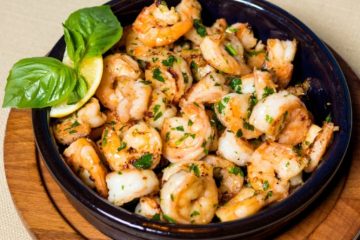Tapioca pearls have become a culinary favorite, featured in everything from bubble tea to desserts, thanks to their chewy texture and versatility. However, cooking them can be tricky if you’re unsure of the process. This guide will explain how long to cook tapioca pearls, explore the different types, and offer foolproof methods to achieve the perfect texture every time. Whether you’re making a refreshing drink or a sweet treat, mastering tapioca pearls is within reach. Let’s embark on this delicious journey together!
What are Tapioca Pearls?
Tapioca pearls are small, round balls made from tapioca starch, which is derived from the cassava root. These chewy pearls are widely used in Asian desserts and beverages. They come in two main varieties: white and black. White tapioca pearls are neutral in flavor and turn translucent when cooked, while black pearls, often flavored with caramel or brown sugar, add sweetness and color to dishes.
Although best known for their role in bubble tea, tapioca pearls are also popular in puddings, soups, and other sweet treats. Their distinctive chewy texture adds a unique contrast to various ingredients, enhancing the overall culinary experience. Loved by chefs and home cooks, tapioca pearls are a versatile addition to many recipes.
Different Types of Tapioca Pearls
Tapioca pearls come in a variety of forms, each offering distinct characteristics that can enhance different culinary experiences:
- Black Tapioca Pearls: These are the classic pearls most commonly found in bubble tea. Made from cassava starch and colored with caramel or brown sugar, they offer a chewy texture and slightly sweet flavor.
- White Tapioca Pearls: Unlike their black counterparts, these pearls have a more subtle taste and turn translucent when cooked. They are often used in desserts for a visually appealing, delicate texture.
- Flavored Tapioca Pearls: These pearls are infused with various flavors like fruit, adding an extra dimension to drinks and desserts. They bring both color and taste, making them a fun and flavorful option.
- Mini Tapioca Pearls (Sago): Smaller than traditional pearls, mini tapioca pearls are often used in puddings, desserts, and some drinks. Their petite size and tender texture make them ideal for lighter, more delicate recipes.
Each type of tapioca pearl has specific cooking requirements, which can affect the final texture and flavor of your dish, making it important to choose the right one for your culinary needs.
Factors Affecting Cooking Time for Tapioca Pearls
Cooking tapioca pearls to the perfect consistency is influenced by several key factors:
- Size of the Pearls: Larger tapioca pearls take longer to cook than smaller ones. The increased size means it takes more time for the heat to penetrate the center and achieve the desired chewiness.
- Brand and Type of Tapioca Pearls: Different brands and types of tapioca pearls may have varying processing methods, which can affect cooking times. Some pearls might be pre-cooked or contain additives that speed up or slow down the cooking process.
- Water Temperature: Starting with boiling water versus cold water can dramatically affect the cooking time. Boiling water helps the pearls cook faster and evenly, while cold water might prolong the process as it takes time to reach the right temperature.
- Altitude: At higher altitudes, the boiling point of water decreases, which can lead to longer cooking times. Adjustments may be necessary to ensure the pearls cook thoroughly.
Understanding and adjusting for these factors can help you consistently achieve the ideal texture in your tapioca pearls, making each cooking experience a unique and enjoyable experiment.
Step-by-Step Guide to Cook Perfect Tapioca Pearls
To cook perfect tapioca pearls, start with careful preparation. Measure out the pearls you need and rinse them under cold water. This step helps to remove excess starch.
Step #1: Preparation
Start by gathering your ingredients and tools: tapioca pearls, water, a pot, and a stirring utensil. Measure out the tapioca pearls, typically one cup for most recipes, and rinse them under cold water to remove excess starch. Then, soak the pearls in plenty of water for at least 30 minutes to help them soften and cook more evenly. While soaking, organize your workspace to ensure a smooth cooking process.
Step #2: Cooking Process
Once prepped, bring a pot of water to a rolling boil, using about 10 cups of water per cup of tapioca pearls. Carefully add the pearls to the boiling water, stirring gently to prevent sticking. The pearls will sink initially and then float, which is normal. Reduce the heat to medium and let the pearls simmer for about 30 minutes for standard-sized pearls or 15 minutes for smaller ones. Stir occasionally to achieve a chewy texture and prevent clumping. After cooking, remove from heat and let the pearls sit covered for another 20-30 minutes.
Step #3: Cooling and Resting Time
After cooking the tapioca pearls, it’s important to cool and rest them properly to enhance their texture. Once they’re done cooking, remove the saucepan from heat and drain the pearls. Rinse them under cold water for about a minute to stop the cooking process and prevent clumping. Place the rinsed pearls in a bowl and let them sit at room temperature for around 30 minutes. This resting period allows the pearls to firm up and absorb any remaining moisture, resulting in a pleasantly chewy texture. If you plan to add syrup or sweeteners later, you can soak the cooled pearls in the mixture to infuse them with flavor without compromising their chewiness.
Step #4: Tips for Achieving Perfect Texture
Achieving the perfect chewy texture for tapioca pearls requires attention to detail. Here are some tips:
- Use Fresh Pearls: Fresh tapioca pearls yield the best results. Stale pearls can become gummy or tough.
- Proper Soaking: Ensure the pearls are adequately soaked before cooking. This allows them to absorb moisture and cook evenly.
- Monitor Water Temperature: Maintain a medium heat during cooking. Water that’s too hot can make the pearls mushy, while too low can leave them hard in the center.
- Rinse After Cooking: Briefly rinse the cooked pearls under cold water to stop further cooking and keep them bouncy.
- Proper Storage: If storing for later use, toss the pearls with a bit of oil or syrup to prevent them from sticking together. This keeps each pearl distinct and ready for your next culinary creation.
Patience and careful handling will reward you with perfectly chewy tapioca pearls every time.
Alternative Methods for Cooking Tapioca Pearls
If you’re looking to switch things up, there are several alternative methods for cooking tapioca pearls that can save time and add variety to your routine.
Instant Pot
The Instant Pot has made cooking tapioca pearls faster and easier. To start, rinse the pearls under cold water to remove excess starch. Then, combine one part tapioca pearls with three parts water in the Instant Pot, ensuring even cooking. Seal the lid and set the pot to high pressure for about 5 minutes. After cooking, allow a natural release for 10 minutes before manually releasing any remaining pressure. This method not only reduces cooking time but also produces perfectly chewy tapioca pearls, ready to be added to drinks or desserts with ease.
Microwave
Cooking tapioca pearls in the microwave is a quick and convenient alternative to the stovetop. Place the tapioca pearls in a microwave-safe bowl and cover them with enough water to allow for expansion during cooking. Microwave on high for about 5 minutes, then stir and continue microwaving for another 3-5 minutes until the pearls are tender but still chewy. Let the pearls sit covered for a few minutes after cooking to achieve the ideal texture. If they become too sticky after cooling, a brief rinse with cold water can help. This method is perfect for those looking to save time while still enjoying soft, delicious tapioca pearls in their favorite drinks or desserts.
Stovetop with Milk or Cream
Cooking tapioca pearls on the stovetop with milk or cream adds a rich, creamy texture to your dessert and infuses the pearls with flavor.
- Rinse the Pearls: Begin by rinsing the tapioca pearls under cold water to remove excess starch.
- Prepare the Mixture: In a pot, combine equal parts of milk or cream and water. This mixture will give the pearls a creamy texture while ensuring they cook properly.
- Cook the Pearls: Bring the mixture to a gentle boil, then add the washed pearls. Stir occasionally to prevent sticking. Cook on low heat until the pearls become translucent, typically 10-15 minutes, depending on their size.
- Finish Cooking: After cooking, let the pearls sit in the warm liquid for an additional 5 minutes. This resting time enhances their tenderness and allows them to absorb more of the creamy flavor.
Feel free to experiment with different types of dairy to create unique taste profiles for your tapioca pearls.



